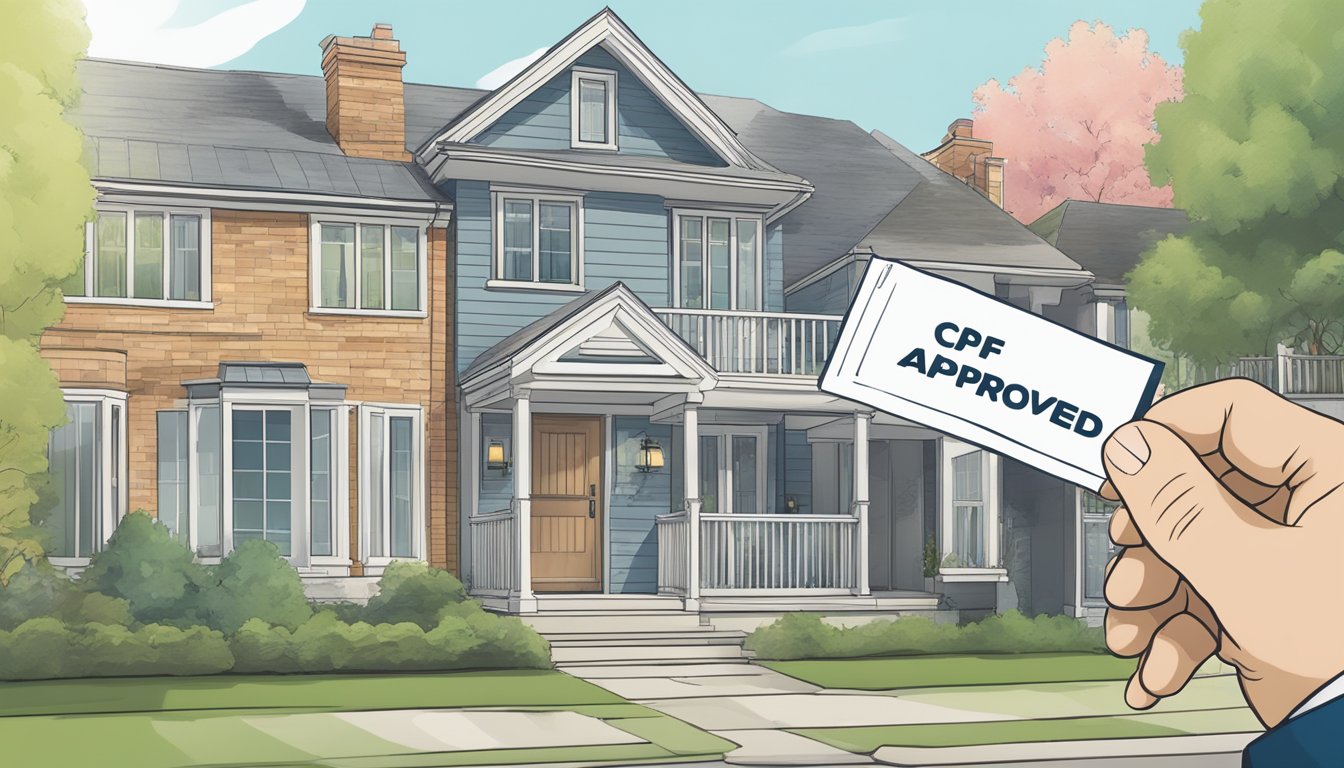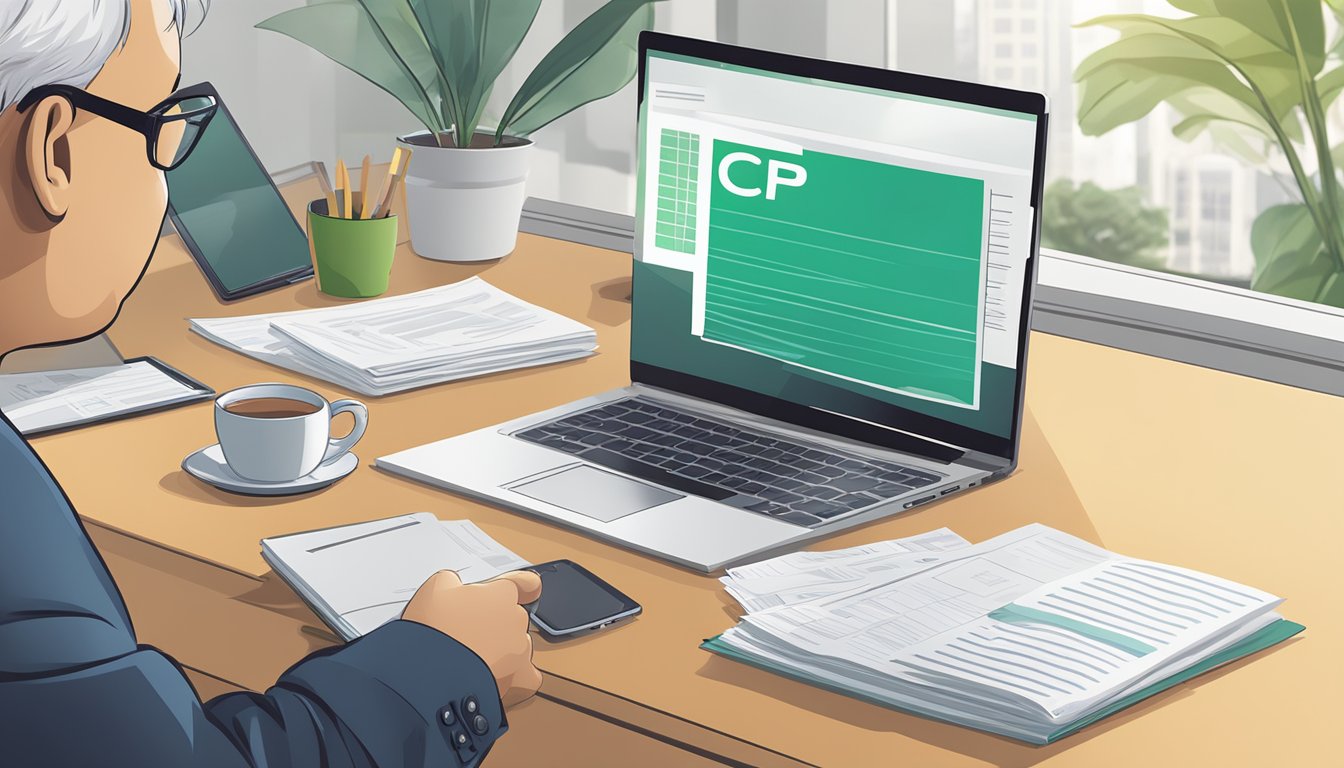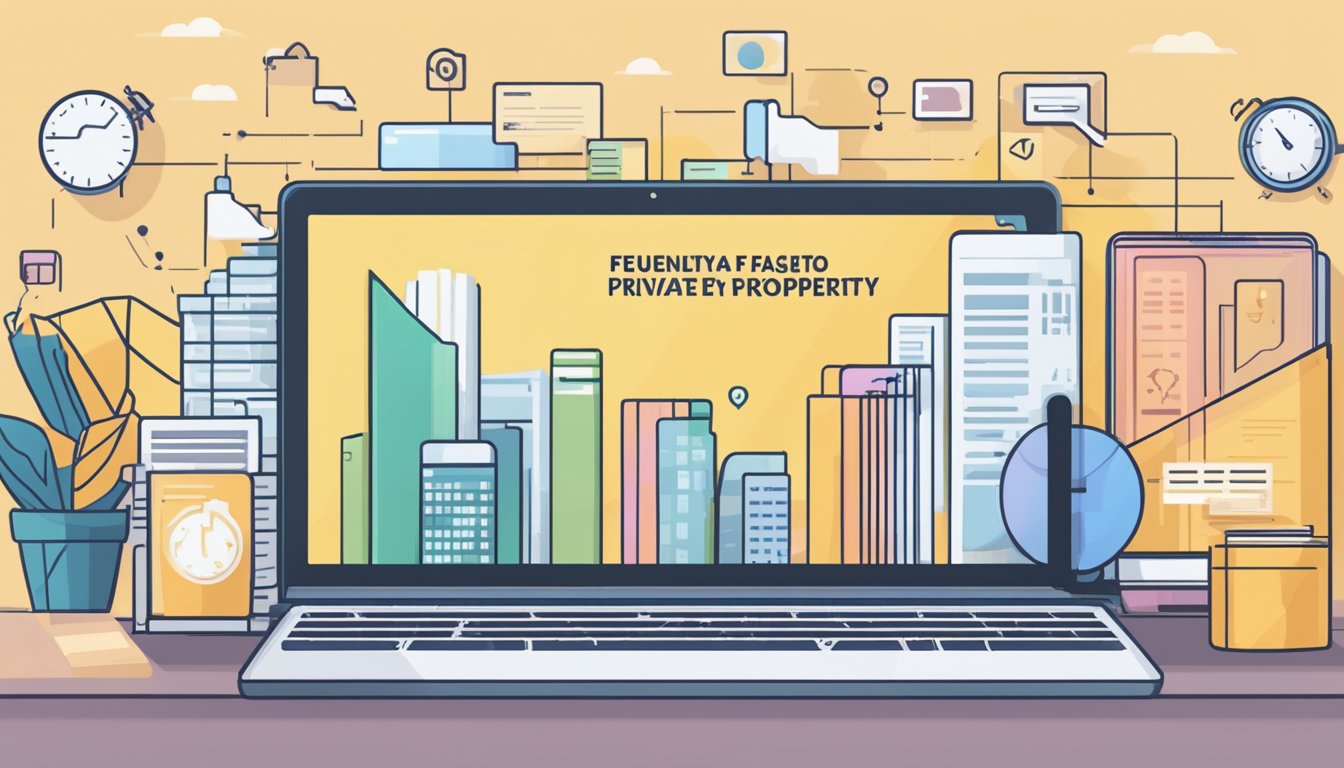If you’re a Singaporean looking to purchase a private property, you might be wondering if you can use your CPF savings to do so. The answer is yes, but there are some restrictions and eligibility criteria you need to meet.

Understanding CPF and its role in property purchase is essential for anyone looking to buy real estate in Singapore. Your CPF savings can be used to purchase both HDB and private residential properties, but the rules differ depending on the type of property you’re buying.
To use your CPF savings for a private property purchase, you need to meet certain eligibility criteria and restrictions. There are also financial implications and considerations to keep in mind, such as the amount of CPF savings you can use and the interest rates involved.
Key Takeaways
- CPF savings can be used to purchase private residential properties in Singapore, but there are eligibility criteria and restrictions to meet.
- There are financial implications and considerations to keep in mind when using CPF savings for a private property purchase.
- To maximise benefits and avoid potential pitfalls, it’s important to understand the steps involved in using CPF savings to purchase a private property.
Understanding CPF and Its Role in Property Purchase

CPF Overview
The Central Provident Fund (CPF) is a mandatory social security savings scheme in Singapore. It is designed to help Singaporeans save for their retirement, healthcare, and housing needs. CPF is funded by contributions from both employees and employers, and the funds are managed by the CPF Board.
Ordinary Account for Property
The Ordinary Account (OA) is one of the three CPF accounts, and it is the account that is most relevant to property purchase. The OA is meant for housing-related expenses, such as the purchase of a home, payment of a housing loan, and payment of mortgage installments.
When it comes to property purchase, the OA savings can be used for the down payment, monthly mortgage installments, stamp and legal fees, and even for the construction of your house if you are buying vacant land for private properties.
It is important to note that the amount of CPF savings that can be used for property purchase is subject to certain limits. The maximum amount that can be used depends on the type of property being purchased, the remaining lease of the property, and the age of the buyer.
For example, if you are using your CPF savings to buy a private property in Singapore, you can use up to 35% of the property’s purchase price. However, if the remaining lease of the property is less than 60 years, the amount that can be used will be reduced. Similarly, if the buyer is above a certain age, the amount that can be used will also be reduced.
Overall, CPF plays a crucial role in property acquisition, especially for those looking to purchase a private property in Singapore. By understanding how CPF works and the limits involved, you can make informed decisions when it comes to property purchase.
Eligibility and Restrictions for Using CPF in Private Property

If you’re planning to buy a private property in Singapore, you may be wondering whether you can use your CPF savings to finance your purchase. The good news is that you can use your CPF savings to buy private residential property, subject to certain eligibility and restrictions.
Age and Withdrawal Limits
To use your CPF savings to buy private property, you must be at least 21 years old. If you’re below 55 years old, you can withdraw your CPF savings up to the Valuation Limit (VL) or the purchase price of the property, whichever is lower. The VL is the lower of the purchase price or the value of the property at the time of purchase.
For those who are 55 years old and above, you can withdraw up to the Full Retirement Sum (FRS) or the property’s value, whichever is lower. The FRS is currently set at $186,000.
Valuation and Withdrawal Limits
The amount of CPF savings you can use to buy a private residential property depends on the property’s Valuation Limit (VL). The VL is set by the CPF Board and is determined by the lower of the purchase price or the value of the property at the time of purchase.
For private residential property, you can use your CPF savings to pay up to 15% of the VL. If you’re buying a landed property or an executive condominium, you can use your CPF savings to pay up to 35% of the VL.
It’s important to note that if you use your CPF savings to buy a property, you’ll need to set aside the Basic Retirement Sum (BRS) and the Full Retirement Sum (FRS) in your Retirement Account (RA) before you can withdraw any excess CPF savings.
In conclusion, using your CPF savings to buy a private residential property in Singapore is possible, subject to certain eligibility and restrictions. Make sure to check your eligibility and the valuation and withdrawal limits before making any decisions.
Financial Implications and Considerations

When using your CPF to purchase a private property in Singapore, it is crucial to consider the financial implications and plan accordingly. Here are some factors to keep in mind:
CPF Accrued Interest
One of the most important things to note when using your CPF to purchase a private property is the accrued interest. CPF accrued interest is the interest earned on the CPF savings, and it is charged at a rate of 2.5% per annum. This interest is charged on the amount withdrawn from the CPF account for housing purposes, and it accumulates over time. As such, it is important to keep in mind that the CPF savings used for housing will have to be repaid with interest when you sell your property.
Loan Options and Interest Rates
Another important consideration when using CPF to purchase a private property is the loan options available and the interest rates they offer. For HDB loans, the interest rate is fixed at 2.6% per annum, while bank loans offer variable interest rates that can range from 1.5% to 3%. It is important to compare the loan options available and choose one that suits your financial situation and risk appetite.
Balancing Retirement and Home Ownership
When using your CPF to purchase a private property, it is important to balance your retirement and home ownership goals. While it may be tempting to use all your CPF savings for housing, it is important to keep in mind that your CPF savings are meant to fund your retirement as well. As such, it is important to consider how much CPF savings you can afford to use for housing without compromising your retirement goals.
In summary, using CPF to purchase a private property in Singapore can be a viable option, but it is important to consider the financial implications and plan accordingly. Keep in mind the accrued interest, compare loan options and interest rates, and balance your retirement and home ownership goals. With careful planning and consideration, you can make the most of your CPF savings and achieve your home ownership goals.
Steps to Purchase Private Property Using CPF

If you are considering using your CPF to purchase a private property in Singapore, there are a few steps you should follow. In this section, we will guide you through the process.
Initial Costs and Stamp Duty
Before you can use your CPF to purchase a private property, you will need to have enough cash on hand to cover the initial costs and stamp duty. These costs include the down payment, legal fees, and cash over valuation (COV), if applicable.
The down payment is typically 25% of the purchase price, and legal fees can range from $2,000 to $3,000. COV is the difference between the purchase price and the property’s market value, and it is only applicable for resale properties.
Stamp duty is a tax that is levied on all property purchases in Singapore. The amount of stamp duty you will need to pay depends on the purchase price of the property, and whether you are a Singapore citizen, a permanent resident, or a foreigner. You can use your CPF to pay for the stamp duty, but you will need to have enough cash on hand to cover any shortfall.
CPF Payment Process
Once you have enough cash on hand to cover the initial costs and stamp duty, you can start the process of using your CPF to purchase the property.
First, you will need to check your CPF withdrawal limit. Your withdrawal limit is the maximum amount of CPF you can use to purchase a property. You can check your withdrawal limit by logging into your CPF account online.
Next, you will need to apply to use your CPF to purchase the property. You can do this by submitting an application to the Central Provident Fund Board (CPFB). The application process depends on your property type and the loan you have taken.
If you are using a bank loan to finance your property purchase, the bank will also need to approve your CPF usage. Once your application has been approved, the CPFB will transfer the CPF funds to the seller’s CPF account.
Finally, you will need to pay the remaining balance of the purchase price using cash or a bank loan. If you are a foreigner, you will also need to pay additional buyer’s stamp duty (ABSD).
Using your CPF to purchase a private property in Singapore can be a complex process, but it can also be a great way to finance your home purchase. By following these steps and working with a trusted real estate agent, you can make the most of your CPF savings and find the home of your dreams.
Maximising Benefits and Avoiding Pitfalls

When using your CPF to purchase private property in Singapore, it is important to understand how to maximise the benefits and avoid potential pitfalls. Here are some tips to help you make the most of your CPF savings.
Leveraging CPF Grants and Schemes
One way to maximise your CPF savings is to take advantage of the various grants and schemes available. For example, the CPF Housing Grant can provide up to $80,000 for first-time buyers of resale flats, while the Enhanced CPF Housing Grant can provide up to $160,000 for those buying a new or resale flat. Additionally, the Proximity Housing Grant can provide up to $30,000 for those buying a resale flat near their parents or children.
For those looking to purchase private residential properties, the CPF can be used to pay for the downpayment and monthly instalments. However, it is important to note that there are certain limits to the amount that can be withdrawn from your CPF account, such as the withdrawal limit and the valuation limit. It is also important to consider the cash over valuation (COV) when purchasing a resale flat, as this can affect the amount of CPF savings that can be used.
Seeking Professional Financial Advice
It is highly recommended that you seek the advice of a qualified financial planner before using your CPF savings to purchase a property. A financial planner can help you understand the risks and benefits of using your CPF savings and help you make informed decisions about your finances.
In addition, it is important to consider the Home Protection Scheme (HPS) when purchasing a property. The HPS is an insurance scheme that provides coverage for outstanding housing loans in the event of death, terminal illness, or total permanent disability. This can provide peace of mind and protect your loved ones from financial hardship in the event of an unexpected tragedy.
Finally, it is important to consider refinancing options and the HDB concessionary loan when purchasing a property. Refinancing can help you save money on interest rates, while the HDB concessionary loan can provide lower interest rates for those purchasing an HDB flat.
By following these tips and seeking professional financial advice, you can maximise the benefits of using your CPF savings to purchase a property while avoiding potential pitfalls.
Frequently Asked Questions

How much of your CPF savings can you use for a condominium’s monthly instalment?
You can use your CPF savings to pay for monthly instalments of a condominium. The amount you can use will depend on the value of your CPF Ordinary Account (OA) savings and the monthly instalment amount. You can use up to 30% of your monthly OA contribution to pay for the monthly instalment of your private property.
What’s the maximum CPF withdrawal limit when purchasing a private property?
The maximum CPF withdrawal limit for purchasing a private property is the lower of the purchase price or the value of the property at the time of purchase. You can use your CPF savings to pay for the downpayment, stamp duties, and conveyancing fees. You can also use your CPF savings to pay for the monthly instalments of your private property.
Can you fully utilise your CPF funds for a resale HDB flat purchase?
Yes, you can fully utilise your CPF savings for a resale HDB flat purchase. The amount you can use will depend on the value of your CPF OA savings and the purchase price of the resale HDB flat.
Is it possible to tap into your CPF savings to buy an HDB flat after reaching 55 years of age?
Yes, it is possible to tap into your CPF savings to buy an HDB flat after reaching 55 years of age. You can use your CPF savings to pay for the downpayment, stamp duties, and conveyancing fees. You can also use your CPF savings to pay for the monthly instalments of your HDB flat.
What’s the process for making a CPF downpayment on a private property?
To make a CPF downpayment on a private property, you need to first ensure that you have sufficient CPF savings in your OA account. You can then authorise the use of your CPF savings to make the downpayment through the private property developer or bank.
How do you go about authorising the use of your CPF to finance a private property?
To authorise the use of your CPF to finance a private property, you need to first ensure that you have sufficient CPF savings in your OA account. You can then authorise the use of your CPF savings through the private property developer or bank. The private property developer or bank will then submit the necessary forms to the CPF Board for approval.




